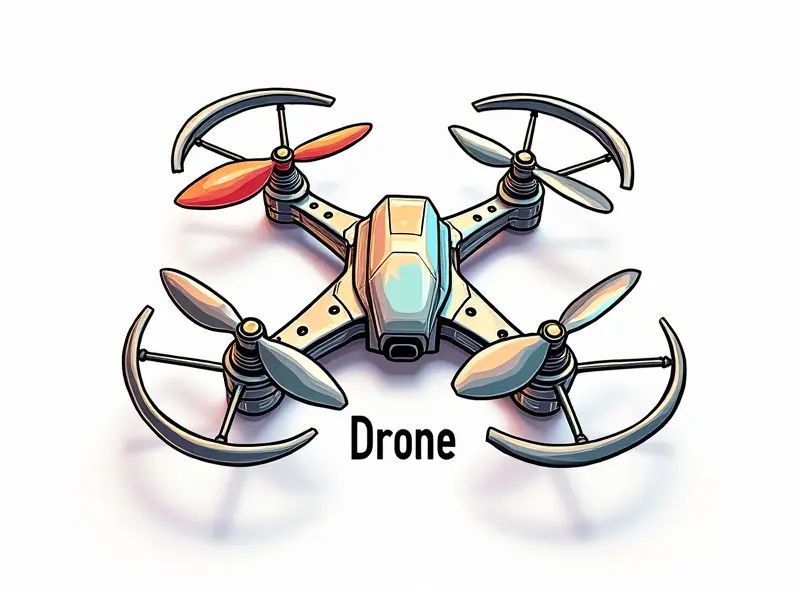Drone racing courses

Top 5 Must-Know Drone Racing Tracks
In the world of FPV (First Person View) drone racing, certain tracks stand out for their unique challenges and excitement. Here are five must-know tracks that every drone racer should experience:
- The Great Wall of China: Known for its steep inclines and narrow passages, this track offers a thrilling mix of speed and precision.
- Hong Kong's Kowloon Walled City Park: This urban course is packed with tight corners and unexpected obstacles, making it a favorite among racers.
- New York City's Central Park: With its winding paths and varied terrain, this track tests the skills of even the most experienced pilots.
- Singapore's Gardens by the Bay: This lush urban park offers a challenging mix of open spaces and dense foliage, providing both speed and agility challenges.
- Miami’s Wynwood Walls: Known for its vibrant street art and tight alleyways, this track is perfect for showcasing your drone's maneuverability.
Ultimate Guide to Building RC Race Courses
Building a race course that challenges and entertains requires careful planning. Here’s how you can create an amazing FPV racing drone course:
Select the Right Location
- Urban Spaces: Utilize parks, rooftops, or industrial areas for varied terrain.
- Natural Environments: Forests and hills offer natural obstacles and speed challenges.
Design the Course Layout
- Mix of Obstacles: Include tight corners, high-speed straights, and challenging turns.
- Variety in Altitude: Incorporate climbs, descents, and flat sections for dynamic racing.
Set Up Safety Measures
- Fencing: Use barriers to prevent drones from flying into dangerous areas.
- No-fly Zones: Clearly mark restricted areas where no drone activity is allowed.
Best Urban Spaces for Drone Racing Tracks
Urban environments provide unique opportunities for FPV racing. Here are some of the best urban spaces to set up your race course:
- Rooftops: Accessible and often overlooked, rooftops offer flat surfaces with minimal obstacles.
- Parks: Central parks like New York's Central Park provide natural barriers and varied terrain.
- Railway Yards: These areas are typically empty and large enough to accommodate complex layouts.
Designing Spectacular FPV Racing Drone Courses
To create a truly spectacular drone racing course, consider the following design elements:
- Incorporate Natural Obstacles: Use trees, buildings, and other structures to add challenges.
- Vary Altitude Changes: Include hills, valleys, and flat areas for dynamic flying experiences.
- Add Spectacular Views: Choose locations with scenic views that enhance the racing experience.
Insider Tips for Setting Up Drone Race Tracks
Setting up a successful drone race track involves more than just marking out paths. Here are some insider tips to help you get started:
- Clear Communication Channels: Ensure all racers have clear and reliable communication.
- Test the Course: Before the event, test-fly the course multiple times to identify potential issues.
- Provide Safety Briefings: Conduct thorough safety briefings for all participants before each race.
Essential Features of a Great Drone Racing Course
A great drone racing course should include the following features:
- Variety in Terrain: Mix flat areas with hills, valleys, and other natural or man-made obstacles.
- Challenging Turns: Include sharp corners that test a racer's agility and control.
- Safe Layout: Ensure the course is set up safely to prevent accidents and injuries.
Innovative Ideas for Indoor Drone Racing Tracks
Indoor racing offers unique challenges and opportunities. Here are some innovative ideas for indoor drone race courses:
- Maze-like Obstacles: Create intricate mazes using poles, ropes, or other materials.
- Climbing Walls: Incorporate vertical elements to test the drones' climbing abilities.
- Bouncy Castles: Use inflatable structures for a bumpy and unpredictable course.
Pro Secrets for Perfecting Your Drone Race Layout
Professional drone racers know that perfecting your race layout is crucial. Here are some pro secrets to help you achieve this:
- Optimize Flight Paths: Plan flight paths that maximize speed while minimizing risk.
- Incorporate Spectator Zones: Design areas where spectators can watch the action without interfering with the race.
- Test and Refine: Continuously test and refine your course to improve safety and excitement.
Best Indoor Drone Racing Course Designs
Indoor racing requires creative solutions. Here are some of the best indoor drone racing course designs:
- Circular Layouts: Circular tracks with multiple lanes offer continuous action and variety.
- Maze Tracks: Complex mazes challenge racers to navigate through tight spaces.
- Tunnel Tracks: Use long, narrow tunnels for high-speed racing and dramatic visuals.
Creatiing Outdoor FPV Drone Racing Tracks
Outdoor tracks offer vast opportunities for creativity. Here’s how to design an outdoor FPV drone race course:
- Select a Diverse Location: Choose locations with varied terrain like forests, hills, and open fields.
- Incorporate Natural Obstacles: Use trees, buildings, and other natural features to create challenges.
- Vary Altitude Changes: Include elevation changes to test the drones' climbing and descending abilities.
Conclusion
Designing a successful drone racing course requires careful planning, creativity, and attention to safety. By incorporating these tips and ideas, you can create an exciting and memorable experience for all participants and spectators.

